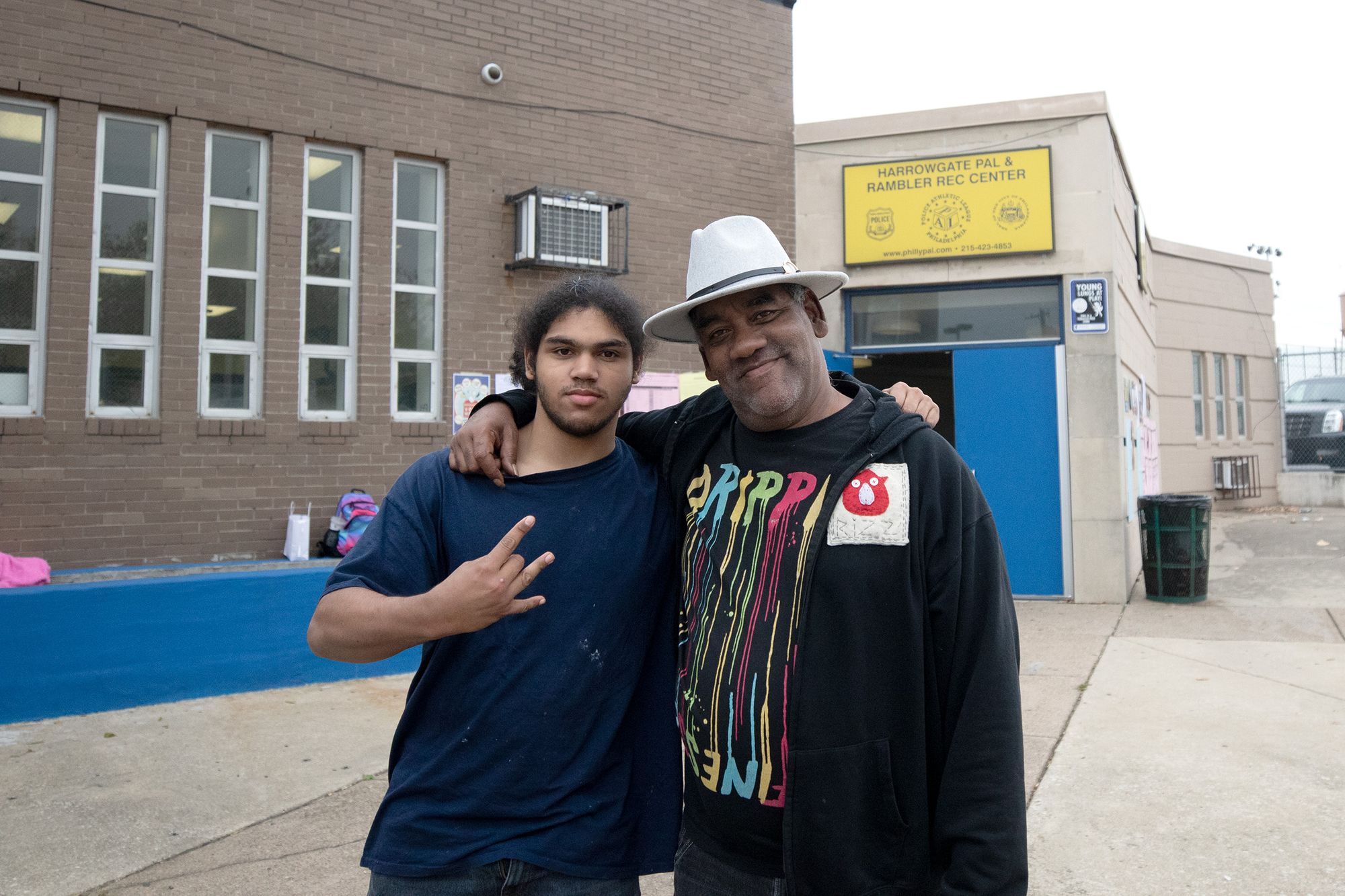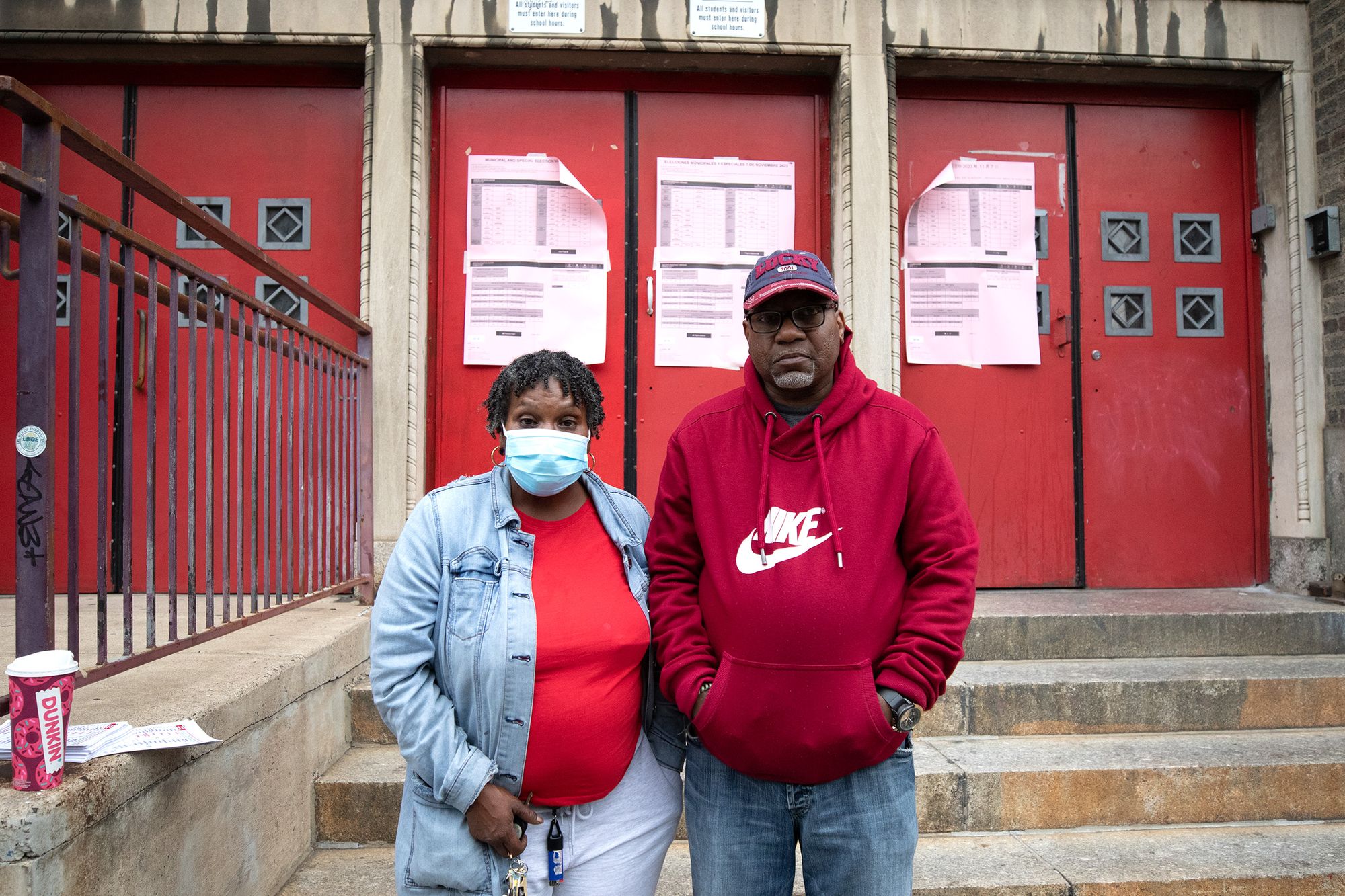Philly launches $600K emergency grants to aid small grocers hit by SNAP shutdown
Applications are open through Dec. 31 on the Merchants Fund website. Priority will go to small, locally owned retailers operating in low-income neighborhoods.
Election workers pondered over contributing factors for Kensington's low turnout on Tuesday, while emphasizing the importance of voting.

Fifteen minutes after the polls opened on Tuesday morning, 33rd Ward Leader Marnie Aument-Loughrey was already driving around the neighborhood addressing issues at the polls.
First, at JJ’s Cafe in Juniata Park, the machines weren’t accepting completed ballots, and the number to report a problem with the machines put callers on hold until the call dropped, Augment-Loughrey said. After Aument-Loughrey realized there was a problem with the printer, she and the poll workers had to seek help elsewhere.
“Since we couldn’t get through that line, I called an assistant administrator that I knew that worked there,” Aument-Loughrey said. “And he’s like, ‘That’s not my department.’ I said, ‘I don’t care if it’s your department or not, get me a machine guy down here.’”
While they waited for the machine to get fixed, voters had to use provisional ballots to cast their votes. Provisional ballots are paper ballots used as a fail-safe if voters believe they are eligible to vote and county elections officials need more time to determine their eligibility. For example, suppose a poll worker can’t find a voter in their division’s poll book. In that case, they will provide a provisional ballot that requires verification before it is counted.
Although Aument-Loughrey was glad to see voters were still able to vote, she said the problems they had shouldn’t have occurred in the first place.
“That’s not why people are coming out to vote,” Aument-Loughrey said. “If that’s how they wanted to vote, they could have done a mail-in ballot.”
Ward leaders like Aument-Loughrey are responsible for endorsing candidates for their ward, creating sample ballots, organizing voter engagement initiatives, and staffing elections. Wards are individual tax and voting districts split further by division, and Philadelphia has 66.
In addition to issues with the voting machines, Aument-Loughrey also had to scramble to replace a poll worker who could no longer work due to a family medical emergency.
“Life happens,” Aument-Loughrey said. “Kids get sick, parents get sick, spouses get sick.”
However, Aument-Loughrey emphasized the importance of polling sites to be fully staffed for two reasons. First, having a full staff helps the election run smoothly, and second, familiar faces encourage the community to come out and vote.
“Believe it or not, the people are used to walking up and seeing a familiar face there,” Aument-Loughrey said. “And when they don’t see that familiar face, they go, ‘Wait a minute – what’s going on?”’
By 10 a.m. at Willard Elementary, Aument-Loughrey was preparing to head back to check the status of the machines at JJ’s Cafe, which serves the 33rd ward’s 11th and 12th divisions.
Although voters were trickling in at the school, Aument-Loughrey cited distance and accessibility issues as to why turnout was low.
According to Aument-Loughrey, the 33rd ward’s 17 and 18 divisions previously voted at McPherson Library in the branch’s basement. The library lacks elevators and ramps, so voters could only enter the space through the stairwell. Due to its wheelchair inaccessibility, the polling location was moved from McPherson to Willard Elementary in the 25th ward.
“So people have to walk all the way around from E and Allegheny, or down Allegheny to Kensington, and then down and around here, they have to walk all the way over to Clearfield and Jasper in order to vote,” Aument-Loughrey said, describing the typical route for voters.
“That’s not handicapped accessible either because you’re asking people to come further out of their way to vote,” Aument-Loughrey said. “You’re disenfranchising them from getting to the places to vote, and not everybody down here drives.”

Over at the Harrowgate PAL, which serves the 33rd Ward’s 15th, 19th, 21st, and 22nd divisions, voters arrived by car and foot. Some teens played with a soccer ball outside in the courtyard as residents marched into the polls.
Israel DeLeon, a committee person for the 33rd Ward’s 22nd division, said that while no significant issues arose at the polling place, there wasn’t a large influx of voters either.
“It’s been a slow turnout, but we usually get swamped with voters after four o’clock,” DeLeon said.
DeLeon was confident they’d see more voters.
“They’ll come out,” he said.
A voter since he came of age, DeLeon said he never missed an election and now uses his role as a committee person to keep his community engaged, starting at home.
“My son’s standing here with me, and he came out today. My daughter’s working inside.” DeLeon said. “I told my kids, you have to start somewhere. You have to press that button. You have to come in. You have to vote for changes.”
As a committeeperson, individuals like DeLeon work in tandem with their ward leader. Voters in each division and ward elect a committee person representing their party. Once a committee is established, all committee people come together to elect leaders for their respective wards. Some responsibilities for committee people include getting residents registered to vote and staffing elections.
“We need better, better streets. We need better education. We need [a] better understanding of the community,” DeLeon said. “... We’re voting in a new mayor, and part of me working the election is making a change, having a change of the city and getting the community together.”

Over at Mastbaum High School, Cassandra Hargrove greeted voters with a pep to her voice. Hargrove has worked the polls for over 28 years and was also confident that despite the light turnout in the morning, there would be a rush of voters in line after they get off work.
Turnout had been good for elections where presidents and governors were on the ballot. Still, local elections had difficulty getting the same foot traffic, Hargrove said.
“The judges and so forth, a lot of people don’t care, but they don’t know that is important,” said Hargrove. “Because they don’t know, that’s why we have a low turnout. You want someone who helps people, not somebody who’s going to be prejudiced against people sitting in those judges’ seats.”
No matter the results, Hargrove said she hopes the people elected have the city’s best interests at heart.
“I pray that whoever gets in these positions that they all come together to do something about the crime rate,” Hargrove said. “That they all do something together for the city, for our section of the city. And that they come all together and make sure that everybody’s rights are not broken, that everybody keeps their rights.”

This story is a part of Every Voice, Every Vote, a collaborative project managed by The Lenfest Institute for Journalism. Lead support is provided by the William Penn Foundation with additional funding from The Lenfest Institute, Peter and Judy Leone, the John S. and James L. Knight Foundation, Harriet and Larry Weiss, and the Wyncote Foundation, among others. To learn more about the project and view a full list of supporters, visit www.everyvoice-everyvote.org. Editorial content is created independently of the project’s donors.
Story edited by Jillian Bauer-Reese
Free accountability journalism, community news, & local resources delivered weekly to your inbox.